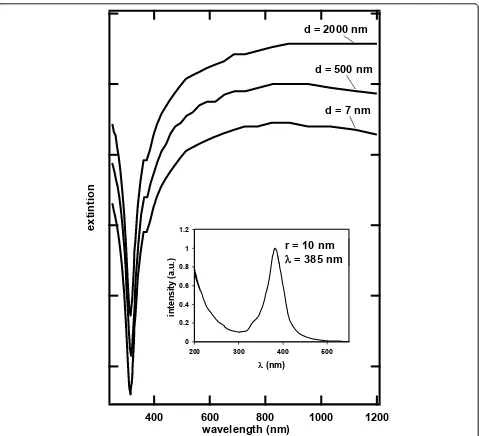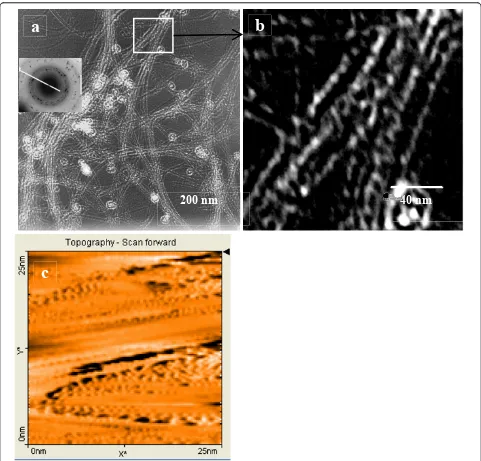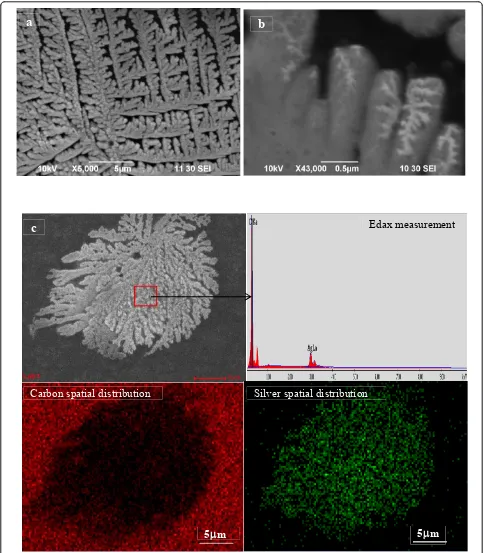One dimensional silver nanostructures on single wall carbon nanotubes
Full text
Figure

![Figure 1 The UV-visible spectra of Ag-SWCNT dispersions. As a function of [AgNO3] between 250 and 850 nm](https://thumb-us.123doks.com/thumbv2/123dok_us/8852356.935410/4.595.56.543.89.495/figure-uv-visible-spectra-swcnt-dispersions-function-agno.webp)


Related documents
The anti- oxidant activity was performed by DPPH free radical scavenging method using ascorbic acid as standard and compound IIa, IIc and IId showed significant free
Mohammad Aazam et al [13] proposed a system termed as Cloud of Things(CoT) that provides ease of managing data from ubiquitous computing and resource management. The recent focus
Materials and Methods: In a prospective cohort study from 4/2015-3/2016 we measured the dimensions of the abdominal wall muscles at different levels at rest and during
We used chondrocytes isolated from specific longitudinal depth zones in bovine articular. cartilage as we previously described [10,
Under normally incident pump, our nanoantenna supports resonant responses at both the fundamental and harmonic wavelengths, enabling a high second-harmonic conversion efficiency of
between such efforts as illiteracy eradication and the formal system of education. Communicative channels between both were not envisaged.. It clearly defines the
(A and B) A129 mice were vaccinated with various doses of CHIKV/IRESv1 vaccine or PBS and then challenged 4 weeks later with Asian/American CHIKV strain YO123223, and weight (A)
This study aimed to assess the prevalence of anxiety and depression and to identify their associated factors including metabolic components among people with type 2 diabetes..
